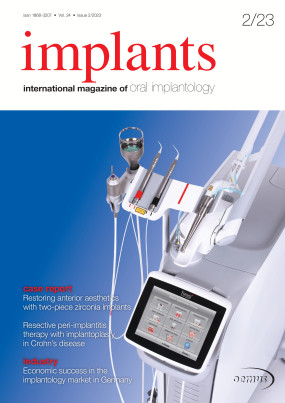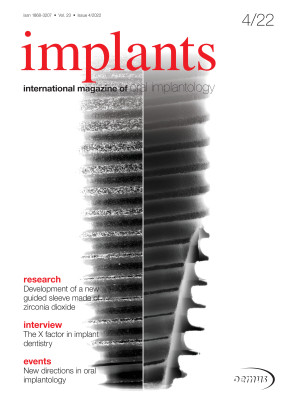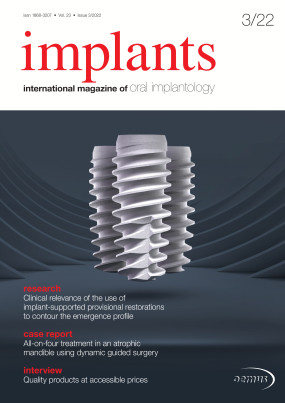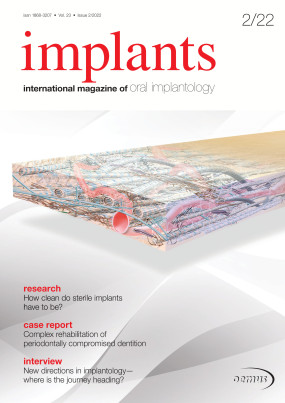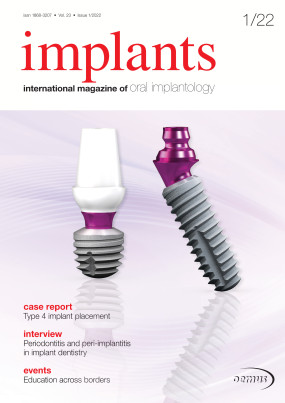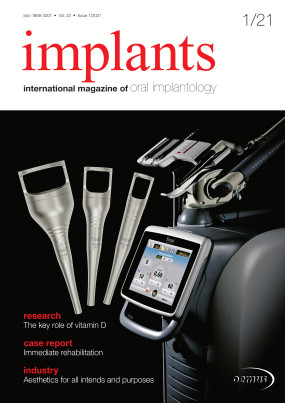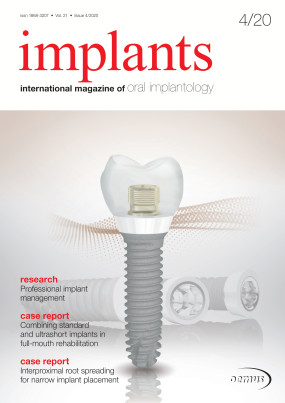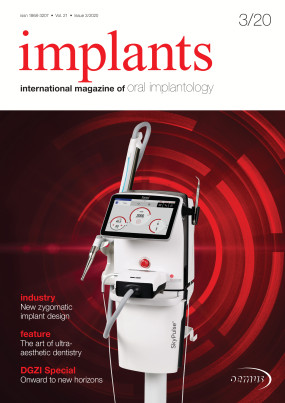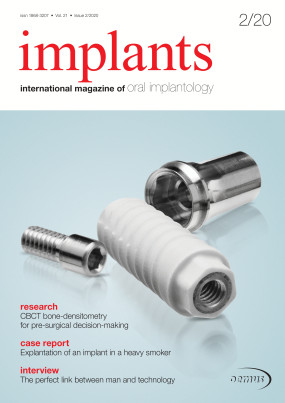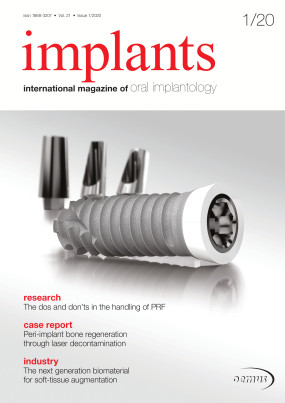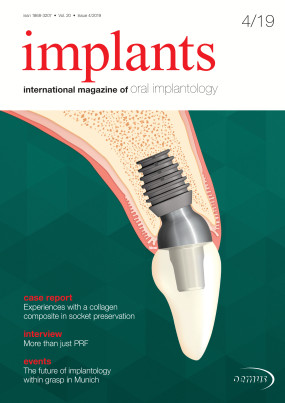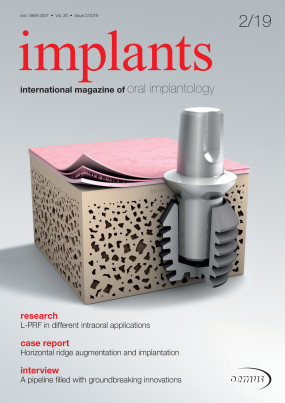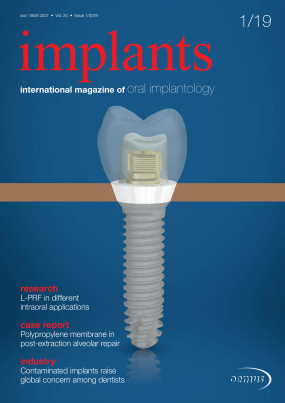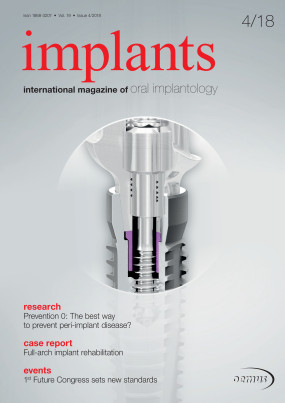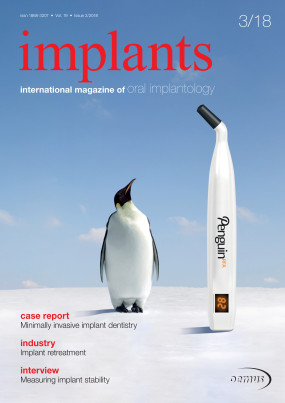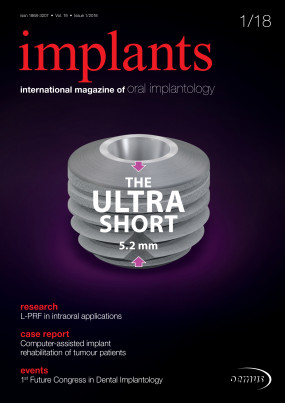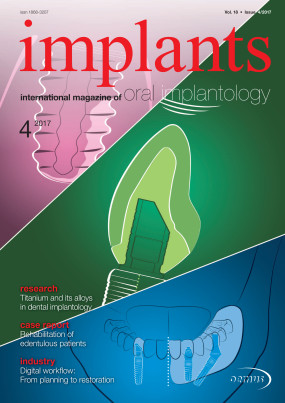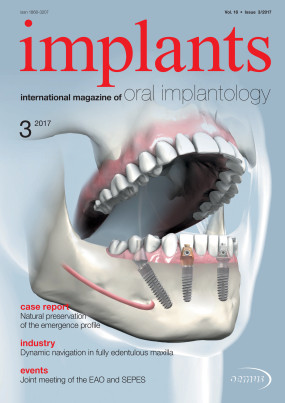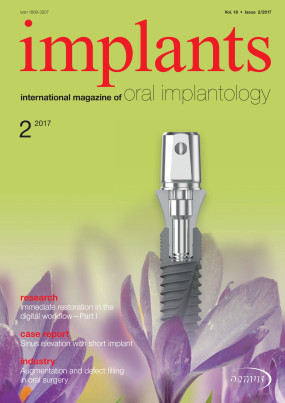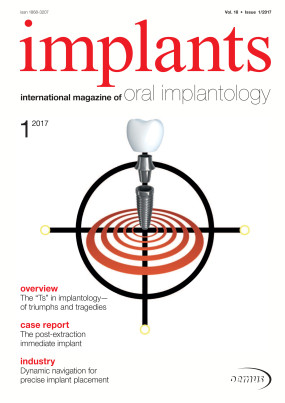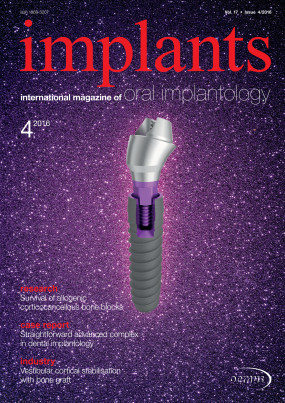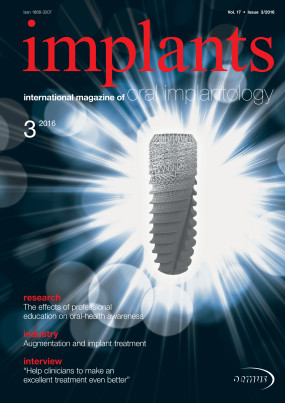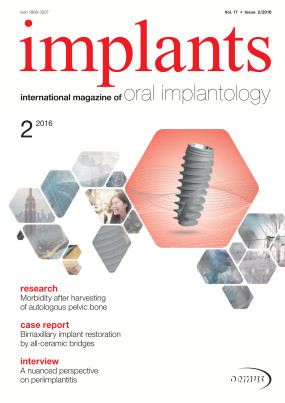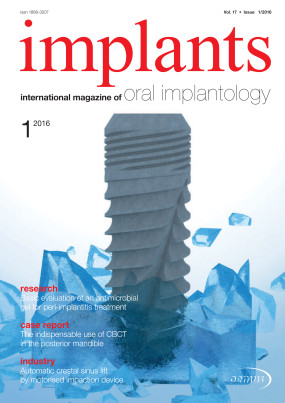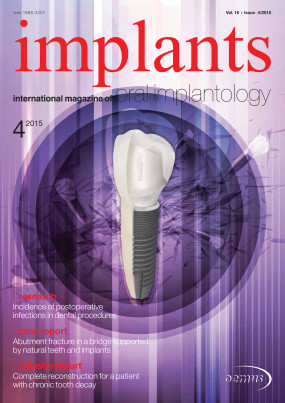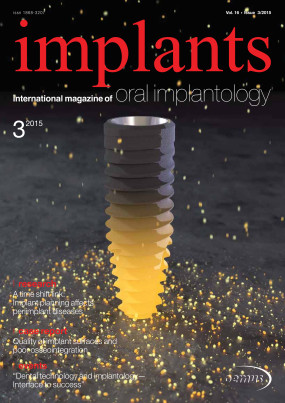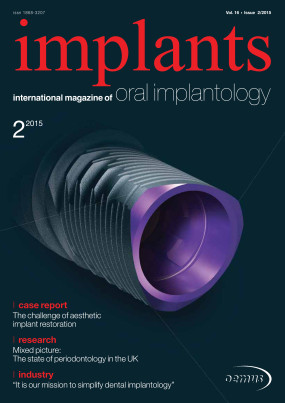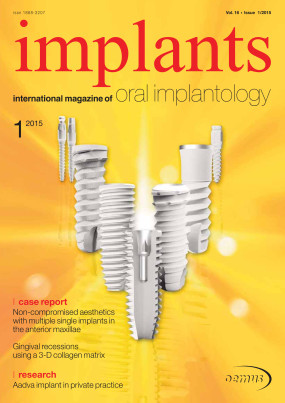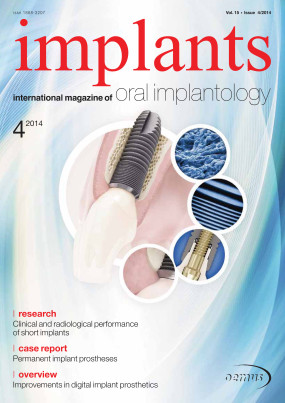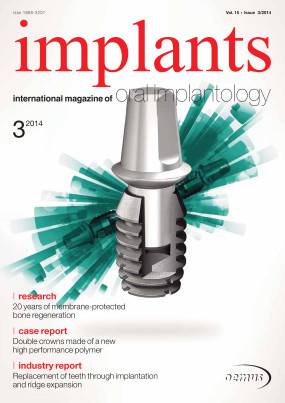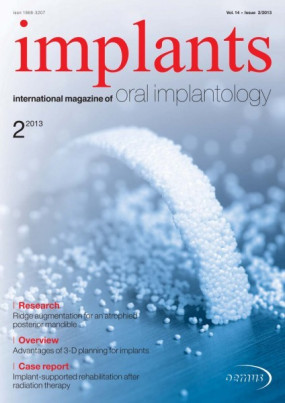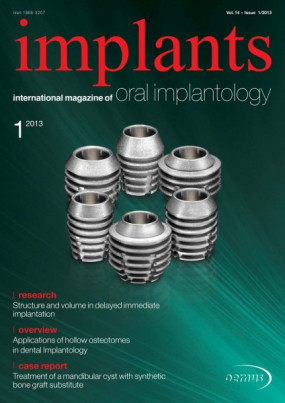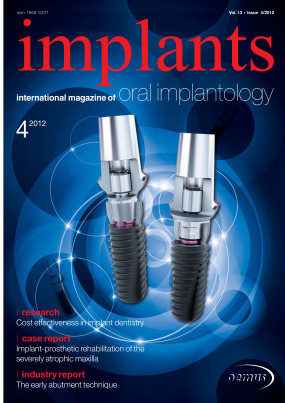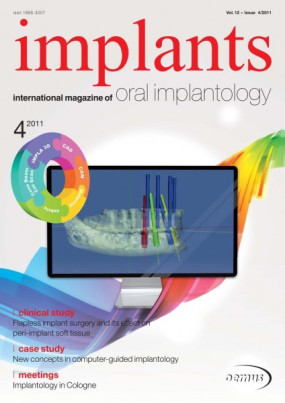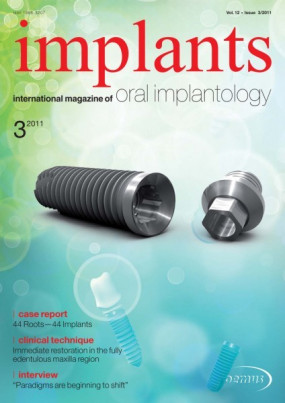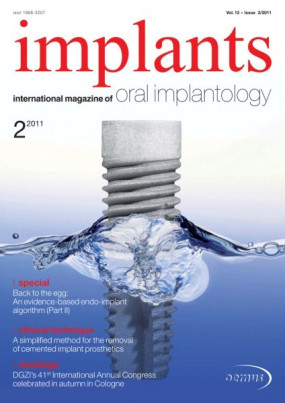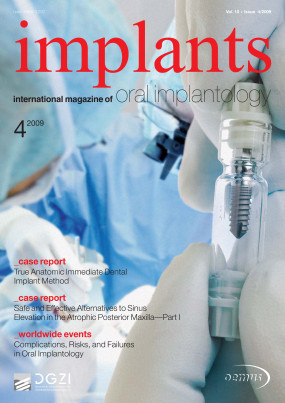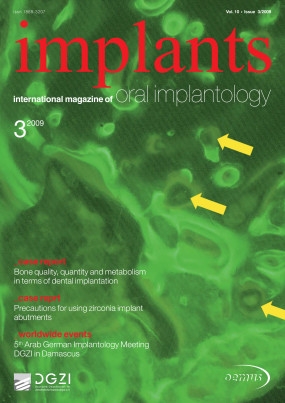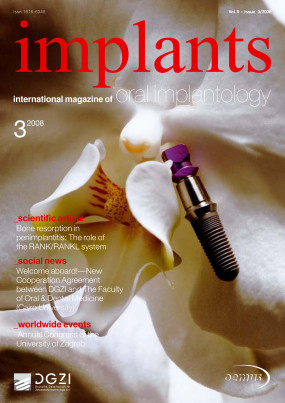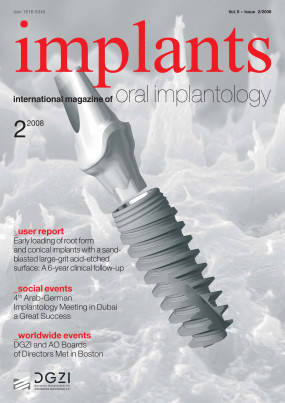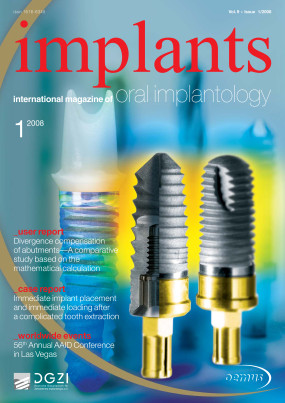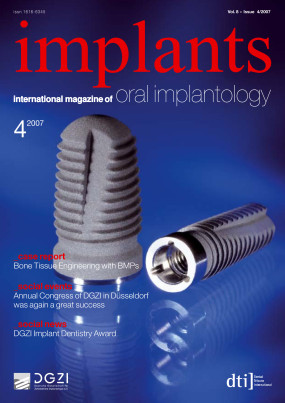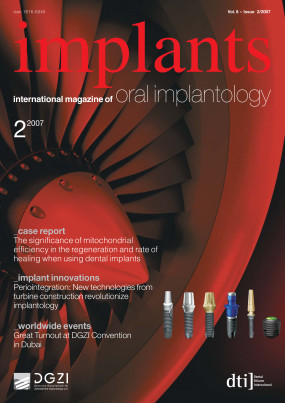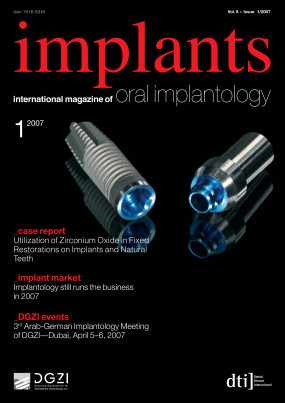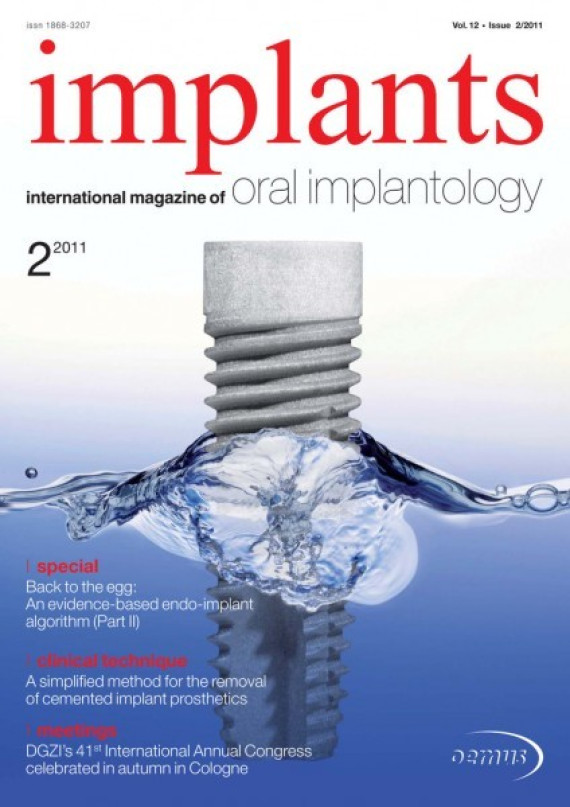Inhaltsverzeichnis
3
The IDS in Cologne, the world’s largest dental show, has again closed its doors. With over 2,000 exhibitors from 59 countries it was once more a superlative exhibition. The variety of cultures, different therapeutic approaches, and numerous innovations on display absolutely overwhelmed visitors...
18
The surgically accelerated orthodontics in multidisciplinary implant treatment
Federico Brugnami & Alfonso Caiazzo, Italy
Multidisciplinary treatment requires excellent communication and coordination amongst clinicians in a variety of fields. Although this can be difficult to achieve at first, interdisciplinary collaboration may result in efficient treatment that patients appreciate and benefit from. When appropriately coordinated, the job of each specialist can facilitate the work of the other team members. For example, orthodontists can be of considerable assistance in periodontal and prosthetic treatment. Dental alignment of the arches can facilitate periodontist’s and prosthodontist’s objectives. This is done, for example, by aligning the natural dentition, making possible a path of insertion for a prosthesis, or establishing a physiological alveolar crestal topography to facilitate periodontal surgery. Orthodontic tooth movement can then be of substantial benefit for the patient...
20
The longevity of dental implants is highly dependent on integration between implant components and oral tissues, including hard and soft tissues. Studies have shown that submerged titanium implants had 0.9 to 1.6 mm marginal bone loss from the first thread by the end of the first year in function, while only 0.05 to 0.13 mm bone loss occurred after the first year.
26
Implant-prosthetic troubleshooting - When dental technicians and dentists break into a sweat!
Dr Georg Bach & Christian Müller, Germany
Implant-prosthetic troubleshooting usually starts at an advanced stage of the implant-prosthetic treatment, i.e. when implants have already been inserted, and the next step is the insertion of prostheses on the artificial abutment teeth. This point in time is extremely unfavourable for several reasons, one being that—owing to the already completed surgical phase—there is no opportunity for intervention and modification of the implant placement, and the other reason being that the patient feels he or she is on the verge of a successfully completed treatment and does not realise that difficulties may now arise, which in extreme cases could result in failure of the entire treatment. This development usually ends in mutual accusations and forensic disputes...
32
36
Augmentation—one important basis in implant treatment concept
Prof Dr med Frank Liebaug, Dr med dent Ning Wu, Germany
In recent years new issues have arisen in the field of implant dentistry. The 1980s was the decade of osseointegration; the 1990s, the era of guided bone regeneration. Recently, the focus has mainly been on the improvement of dental aesthetics and methods of improving the aesthetic and functional results, the load-carrying capacity and the simplification of surgical techniques. These aspects should not be considered separately from each other, as they overlap...
40
The upbeat mood at IDS 2011 was especially due to the large number of visitors. Accordingly, the trade fair’s halls were very busy and the exhibitors' stands were extremely well visited. Exhibitors confirmed that representatives of all important professions—ranging from dental practices and dental labs to the dental trade, plus the higher education sector—visited their stands. Exhibitors were particularly pleased with the large number of international visitors to the trade fair...
42
A few months ago the German Association of Dental Implantology (DGZI) celebrated its 40th Anniversary Congress with great success in Berlin. At the moment, preparations are underway for DGZI’s 41st International Annual Congress which is planned to take place in the cathedral city of Cologne from September 30 until October 1...









